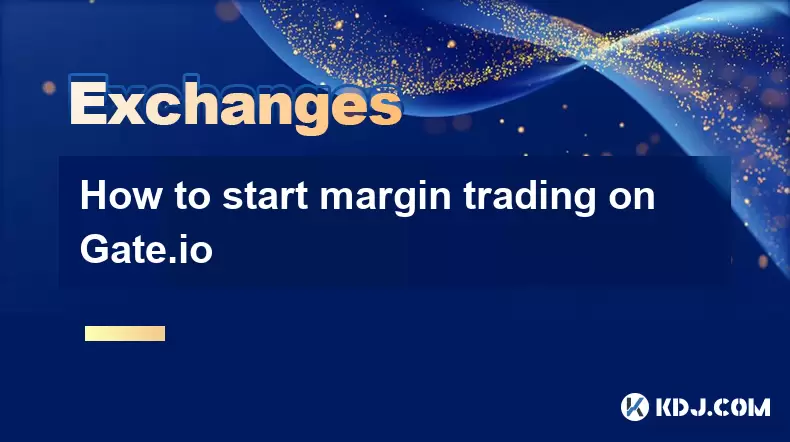-
 Bitcoin
Bitcoin $118700
1.60% -
 Ethereum
Ethereum $4230
-1.16% -
 XRP
XRP $3.197
-2.08% -
 Tether USDt
Tether USDt $1.000
-0.01% -
 BNB
BNB $803.3
-0.46% -
 Solana
Solana $183.2
0.06% -
 USDC
USDC $0.9999
0.00% -
 Dogecoin
Dogecoin $0.2343
-3.95% -
 TRON
TRON $0.3390
1.00% -
 Cardano
Cardano $0.8020
-1.93% -
 Hyperliquid
Hyperliquid $45.18
2.39% -
 Chainlink
Chainlink $22.04
3.02% -
 Stellar
Stellar $0.4449
-1.66% -
 Sui
Sui $3.872
-2.14% -
 Bitcoin Cash
Bitcoin Cash $570.6
-0.37% -
 Hedera
Hedera $0.2593
-2.92% -
 Ethena USDe
Ethena USDe $1.001
-0.01% -
 Avalanche
Avalanche $23.83
-3.79% -
 Litecoin
Litecoin $124.5
1.83% -
 Toncoin
Toncoin $3.335
-2.74% -
 UNUS SED LEO
UNUS SED LEO $9.029
0.26% -
 Shiba Inu
Shiba Inu $0.00001363
-2.31% -
 Uniswap
Uniswap $10.93
-1.42% -
 Polkadot
Polkadot $4.060
-2.29% -
 Dai
Dai $1.000
-0.01% -
 Cronos
Cronos $0.1631
2.71% -
 Ethena
Ethena $0.7746
3.06% -
 Pepe
Pepe $0.00001208
-3.73% -
 Bitget Token
Bitget Token $4.445
-1.47% -
 Monero
Monero $268.7
-2.30%
How to start margin trading on Gate.io
Gate.io offers margin trading with up to 4x leverage, supporting both cross and isolated modes to manage risk while trading major pairs like BTC/USDT and ETH/USDT.
Aug 10, 2025 at 10:01 pm

Understanding Margin Trading on Gate.io
Margin trading is a method that allows traders to borrow funds to increase their trading position beyond what would be available from their cash balance alone. On Gate.io, one of the leading cryptocurrency exchanges, margin trading enables users to leverage their capital, potentially amplifying both gains and losses. Before engaging in margin trading, it’s essential to understand the risks involved and how the system works on this platform. Gate.io supports cross margin and isolated margin modes, each offering different risk exposure and fund management approaches. In cross margin mode, all available assets in your margin account act as collateral, while in isolated margin, only the funds allocated to a specific trade are at risk.
Prerequisites for Enabling Margin Trading
To begin margin trading on Gate.io, certain steps must be completed to activate the feature.
- Ensure your account is fully verified (KYC completed).
- Log in to your Gate.io account and navigate to the top-right menu.
- Click on "Wallets", then select "Margin Account".
- If you haven’t activated margin trading, you’ll see an option to "Enable Margin"—click it.
- Read and agree to the risk disclosure agreement.
- Set a separate password for your margin account if prompted.
Once enabled, you’ll gain access to the Margin Trading interface, where you can deposit assets, borrow funds, and open leveraged positions. Note that only specific supported trading pairs are available for margin trading—common ones include BTC/USDT, ETH/USDT, and BNB/USDT.
Funding Your Margin Account
After enabling the margin feature, the next step is transferring assets into your margin wallet. This process involves moving funds from your spot wallet to your margin wallet.
- Go to "Wallets" > "Margin Account".
- Click "Transfer".
- Select the crypto asset you wish to transfer (e.g., USDT).
- Choose the source wallet (usually "Spot Wallet").
- Enter the amount to transfer.
- Confirm the transaction.
The transferred assets now serve as collateral for borrowing. The Loan-to-Value (LTV) ratio determines how much you can borrow based on your collateral. For example, if the LTV limit is 66.7%, you can borrow up to two-thirds of your collateral’s value. Each asset has a different maximum loan amount and interest rate, which are displayed in real time on the margin interface.
Borrowing Funds and Opening a Margin Position
Once your margin wallet is funded, you can proceed to borrow funds for trading.
- Navigate to the "Borrow" tab within the Margin Account.
- Select the currency you want to borrow (e.g., BTC).
- Choose the lending pool (Gate.io uses a peer-to-peer or platform-based lending model).
- Review the daily interest rate and available liquidity.
- Enter the borrow amount—ensure it does not exceed your borrowing power based on your collateral.
- Click "Borrow" and confirm.
After borrowing, go to the spot trading interface for the desired trading pair (e.g., BTC/USDT). Place a buy order using the borrowed funds. This creates a long position. Alternatively, if you borrow USDT to sell BTC, you’re opening a short position. The key is that leverage increases exposure—using 3x leverage means your profit or loss is three times that of a spot trade with the same capital.
Managing Risk and Avoiding Liquidation
One of the most critical aspects of margin trading is risk management. Gate.io enforces a maintenance margin level—if your equity falls below this threshold, your position may be liquidated. To monitor your status:
- Check the LTV ratio in your margin account dashboard.
- A higher LTV means higher risk; when it approaches the liquidation threshold (e.g., 85%), you must act.
- You can repay part of the loan to reduce LTV.
- Alternatively, add more collateral by transferring additional assets to your margin wallet.
Set price alerts or use stop-limit orders to protect your position. If liquidation occurs, Gate.io will automatically sell part or all of your assets to repay the debt, and a liquidation fee may apply. Always keep sufficient buffer in your margin account to withstand market volatility.
Repaying Loans and Withdrawing Funds
After closing your position, it’s crucial to repay your borrowed funds to stop accruing interest.
- Go to the "Repay" section in the Margin Account.
- Select the loan you wish to repay (multiple loans may exist if you borrowed in tranches).
- Choose whether to repay manually or automatically.
- Enter the repayment amount—you can repay partially or in full.
- Confirm the transaction.
Interest is charged hourly based on the borrowed amount and the current rate. Repaying promptly minimizes costs. Once all loans are settled, you can transfer remaining assets back to your spot wallet:
- Use the "Transfer" function.
- Select "From: Margin Wallet" and "To: Spot Wallet".
- Choose the asset and amount.
- Confirm.
This completes the margin trading cycle on Gate.io.
Frequently Asked Questions
What is the difference between cross and isolated margin on Gate.io?
In cross margin, all assets in your margin wallet are pooled as collateral, reducing the chance of liquidation due to diversified backing. In isolated margin, only the specific asset pair’s collateral is used, limiting risk to that single position but increasing liquidation sensitivity.
How are margin interest rates determined on Gate.io?
Interest rates are set by the lending market supply and demand. Rates fluctuate hourly and are displayed before borrowing. You’re only charged for the actual hours you hold a loan.
Can I trade any cryptocurrency on margin?
No. Only approved trading pairs support margin trading. These are listed in the Margin section and typically include major coins like BTC, ETH, and stablecoins such as USDT and USD.
What happens if my margin position is liquidated?
Gate.io will automatically close your position by selling assets to repay the loan. A liquidation fee is deducted, and any remaining funds are returned to your margin wallet. If the sale doesn’t cover the debt, your other margin assets may be used to settle the balance.
Disclaimer:info@kdj.com
The information provided is not trading advice. kdj.com does not assume any responsibility for any investments made based on the information provided in this article. Cryptocurrencies are highly volatile and it is highly recommended that you invest with caution after thorough research!
If you believe that the content used on this website infringes your copyright, please contact us immediately (info@kdj.com) and we will delete it promptly.
- Gemini AI's Crypto Crystal Ball: Predicting 1000x Gains with Meme Coins?
- 2025-08-11 02:50:12
- Cold Wallet Crypto Presale: Your Price Edge in the Wild West of Crypto
- 2025-08-11 02:50:12
- Rollblock, Solana, and Cardano: Unpacking the Hottest Trends in Crypto
- 2025-08-11 03:50:12
- Cold Wallet: Your Ticket to Massive ROI in the Wild World of Crypto
- 2025-08-11 03:50:12
- BONK Price Check: Solana Meme Coin Faces Ethereum Migration Heat?
- 2025-08-11 03:55:19
- Lil Pepe: The Undervalued Meme Coin Set to Explode in 2025?
- 2025-08-11 02:30:12
Related knowledge

How to use margin trading on Poloniex
Aug 08,2025 at 09:50am
Understanding Margin Trading on Poloniex

How to read the order book on KuCoin
Aug 10,2025 at 03:21pm
Understanding the Order Book Interface on KuCoinWhen accessing the order book on KuCoin, users are presented with a real-time display of buy and sell ...

How to use advanced trading on Gemini
Aug 08,2025 at 04:07am
Understanding Advanced Trading on GeminiAdvanced trading on Gemini refers to a suite of tools and order types designed for experienced traders who wan...

How to use advanced trading on Gemini
Aug 08,2025 at 10:56pm
Understanding Advanced Trading on GeminiAdvanced trading on Gemini refers to the suite of tools and order types available on the Gemini ActiveTrader p...

How to get my API keys from KuCoin
Aug 08,2025 at 06:50pm
Understanding API Keys on KuCoinAPI keys are essential tools for users who want to interact with KuCoin's trading platform programmatically. These key...

How to trade options on Deribit
Aug 09,2025 at 01:42am
Understanding Deribit and Its Options MarketDeribit is a leading cryptocurrency derivatives exchange that specializes in Bitcoin (BTC) and Ethereum (E...

How to use margin trading on Poloniex
Aug 08,2025 at 09:50am
Understanding Margin Trading on Poloniex

How to read the order book on KuCoin
Aug 10,2025 at 03:21pm
Understanding the Order Book Interface on KuCoinWhen accessing the order book on KuCoin, users are presented with a real-time display of buy and sell ...

How to use advanced trading on Gemini
Aug 08,2025 at 04:07am
Understanding Advanced Trading on GeminiAdvanced trading on Gemini refers to a suite of tools and order types designed for experienced traders who wan...

How to use advanced trading on Gemini
Aug 08,2025 at 10:56pm
Understanding Advanced Trading on GeminiAdvanced trading on Gemini refers to the suite of tools and order types available on the Gemini ActiveTrader p...

How to get my API keys from KuCoin
Aug 08,2025 at 06:50pm
Understanding API Keys on KuCoinAPI keys are essential tools for users who want to interact with KuCoin's trading platform programmatically. These key...

How to trade options on Deribit
Aug 09,2025 at 01:42am
Understanding Deribit and Its Options MarketDeribit is a leading cryptocurrency derivatives exchange that specializes in Bitcoin (BTC) and Ethereum (E...
See all articles

























































































